Exploring the Punjab on Horseback: A Journey in Alexander the Great’s Footsteps
On a warm December afternoon, the picturesque gardens of a family estate in Nurpur Noon, Pakistan, spring to life. The vibrant rose bushes accent the sprawling lawn, while peach-hued hoopoes flit amongst the shrubs, and active chickens enjoy their own space. As sunset approaches, a midwinter mist blankets the area, accompanied by the distant howls of jackals from the nearby jungles. In a courtyard warmed by a brazier, a group of seasoned riders and enthusiastic travelers gathers after an introductory polo match—my first and somewhat clumsy attempt at the sport—followed by a serene horseback ride through colorful orange groves. Though we arrived just hours ago from Islamabad, our senses are already alive with memories of a ceremonial welcome featuring drums and dances, along with a vibrant parade through the village showered with rose petals.
This memorable arrival, likened to a mini-festival, is the vision of Bertie Alexander and Taimur Noon, the masterminds behind the Nurpur Bandobast expedition. Friends from their days at the Royal Agricultural University in Cirencester, they launched their inaugural season for 2023-24, planning four trips from October to March 2025-26, welcoming small groups of six to ten riders. Customized dates for private groups can also be arranged. Bertie’s enthusiasm is contagious as he shares their goal to craft an otherworldly, thrilling experience for their guests.
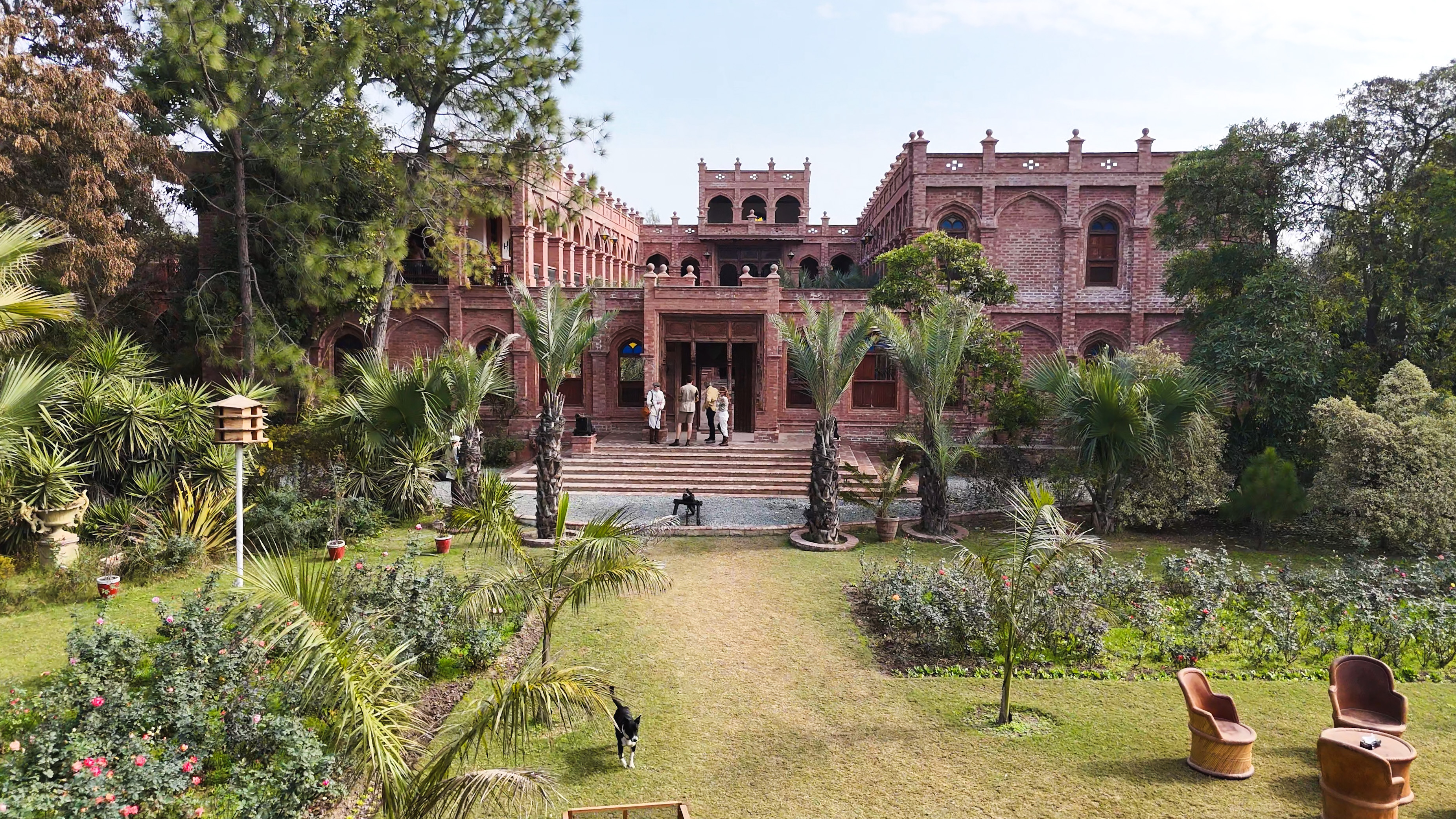
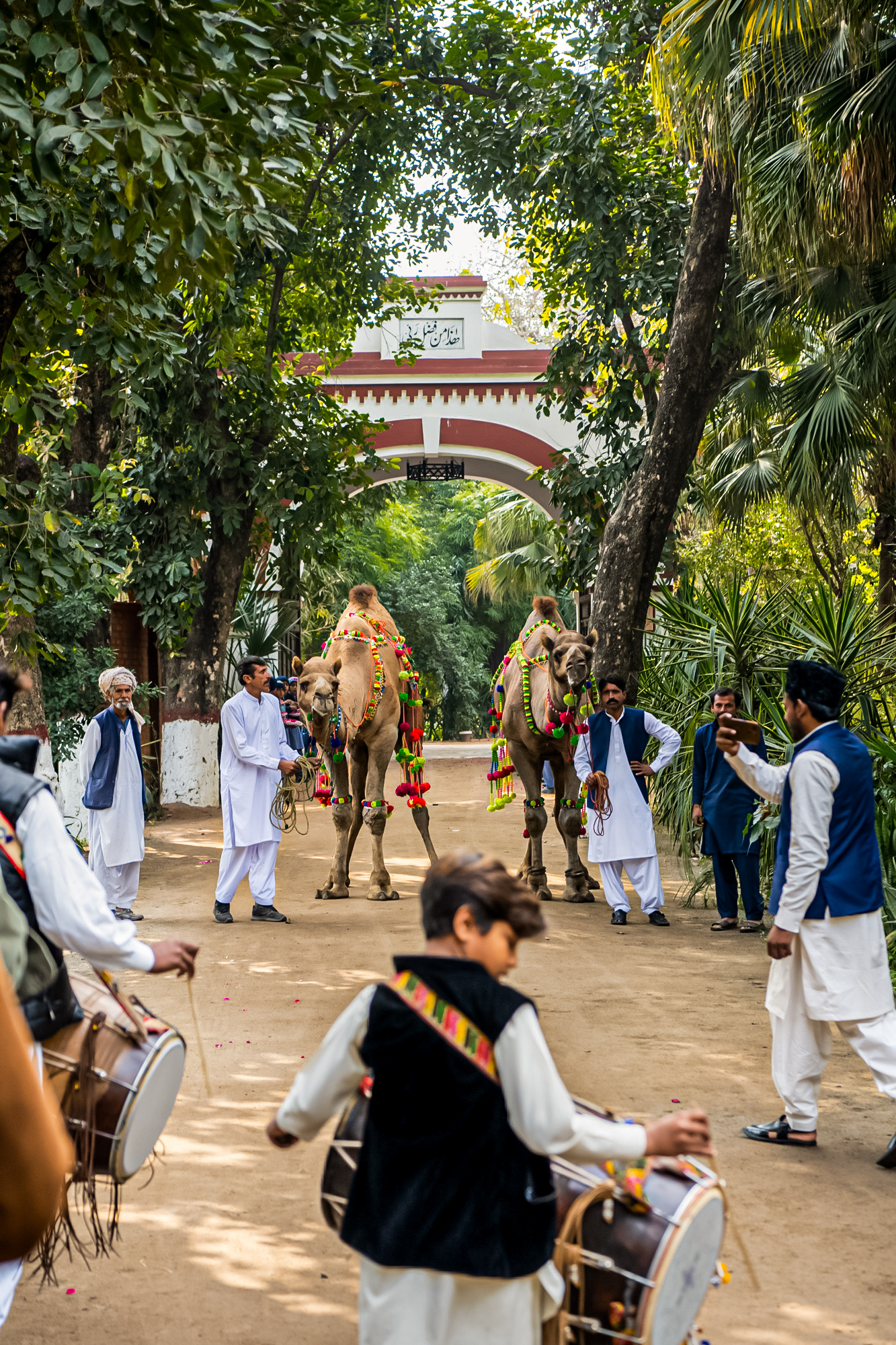
Their thrilling safari immerses participants in the rich rural culture of the hazy golden landscapes of northern Punjab, making full use of the Noon family estate’s scenic location in the Sargodha District, positioned on the eastern bank of the Jhelum River. This influential family’s ties to the land trace back to the 19th century, linked with the region’s history both prior to and after British annexation. Taimur and his twin brother Saif are great-grandchildren of Sir Feroz Khan Noon, an Oxford-educated barrister who served as Pakistan’s prime minister in the late 1950s.
The Noon estate seamlessly blends a country house retreat with a base for our week-long expedition. Our introductory polo session took place in a field just beyond the gate, amusing local children who watched in delight. Surrounded by lush trees and modestly set behind the village mosque, the family mansion, though newly built, exudes an air of historical significance. Its striking en-suite rooms overlook the central courtyard, while the walls inside are adorned with equestrian portraits and vintage artifacts. The dedicated staff sets up lunch tables on the lawn featuring local dishes like curry, dhal, and pickles, while reviving us with fresh juices upon our return from rides. Through this communal environment, Bertie and Taimur hope to share the enchanting charm and hospitality of Pakistan with their guests.
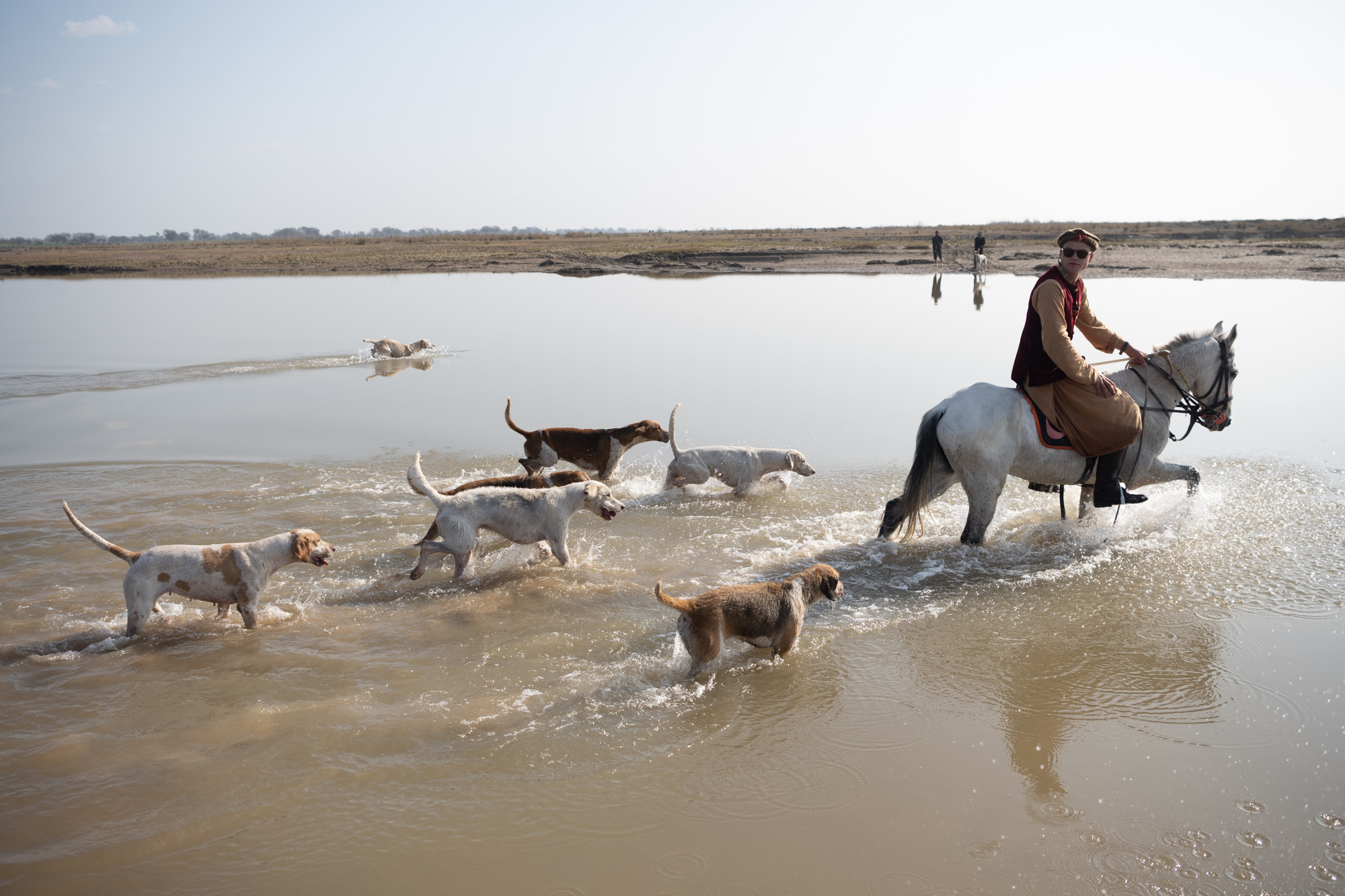
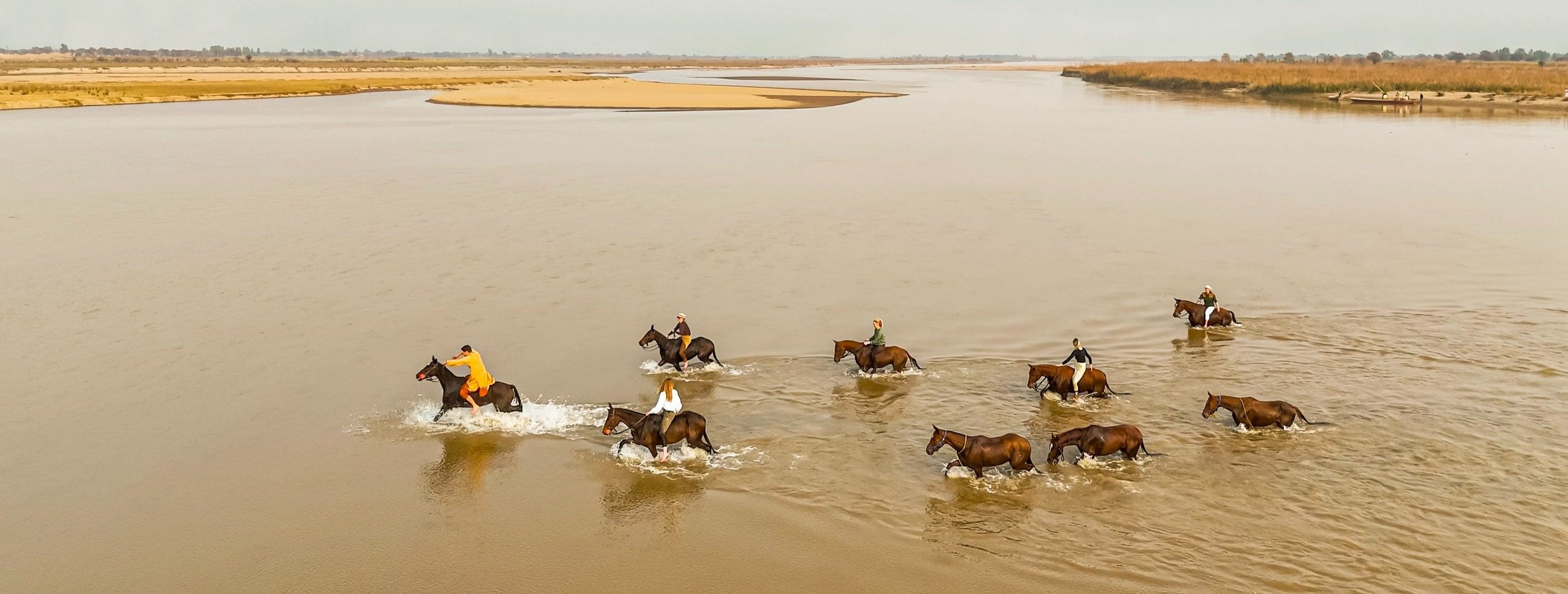
The next morning, we regroup with our horses for a three-day trail ride that takes us through two well-planned encampments. Our polo saddles, padded with sheepskin for added comfort, make the hours in the saddle more enjoyable, while simplified tack allows for a relaxed riding experience. I ride Zorro, a spirited young black horse whose fluffy mane and white face bring to mind a playful puppy. He shows a readiness for adventure, effortlessly leaping over the irrigation ditches that punctuate this agricultural landscape. As the day progresses, we quicken our pace to a delightful canter along sandy paths leading to the Jhelum’s banks. Here, we have the choice to swim with our horses or to cross on a ferry. Some of us, feeling a mix of excitement and apprehension, remove saddles and clothing to embrace the river, which is gently flowing at a calm December level. Our horses swim with enthusiasm, surging forward as they reach deeper waters, before bounding ashore on the opposite bank.
Our campsite awaits on a semi-permanent island in the river, where large tents provide ample space and a beautifully set dining table is perched on the sandy shore. We find ourselves a few kilometers downriver from the location where early 20th-century explorer Sir Aurel Stein suggested that Alexander the Great might have crossed in his fateful encounter with King Porus. This historical connection intrigues our group, particularly those of us with Classics degrees, but our shared passion lies in galloping across varying terrains, whether through hunting courses, polo fields, or the expansive plains reminiscent of Alexander’s time.
The next morning, we set out to explore the riverine scenery as a misty sunrise embraces the land. We venture out with the English foxhounds from the Peshawar Vale Hunt, who have traveled across the river by boat to join us. The hounds’ excited sounds fade as darkness falls, replaced by the melodic tones of Sufi music performed around our campfire, courtesy of a visiting band.
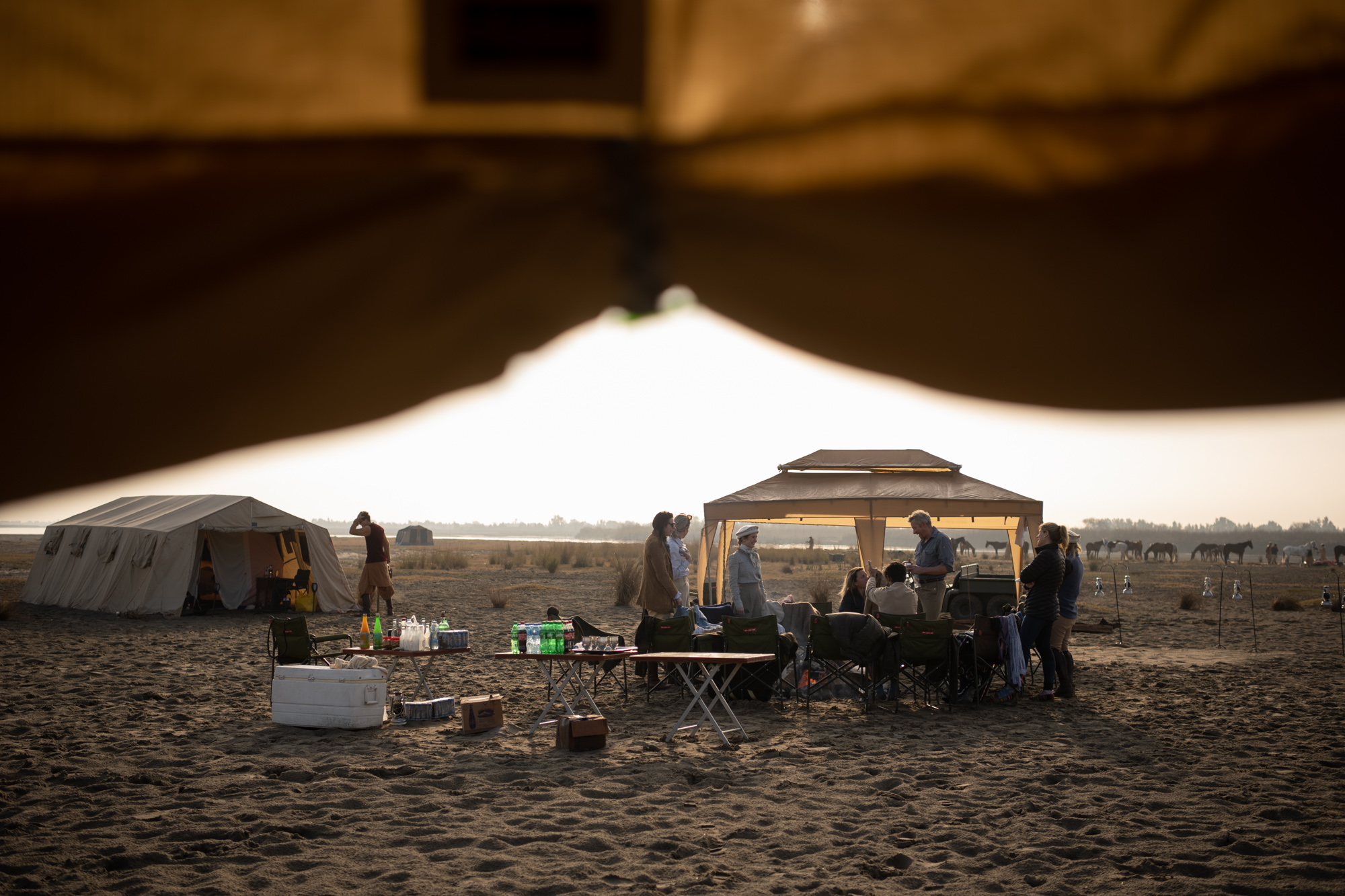
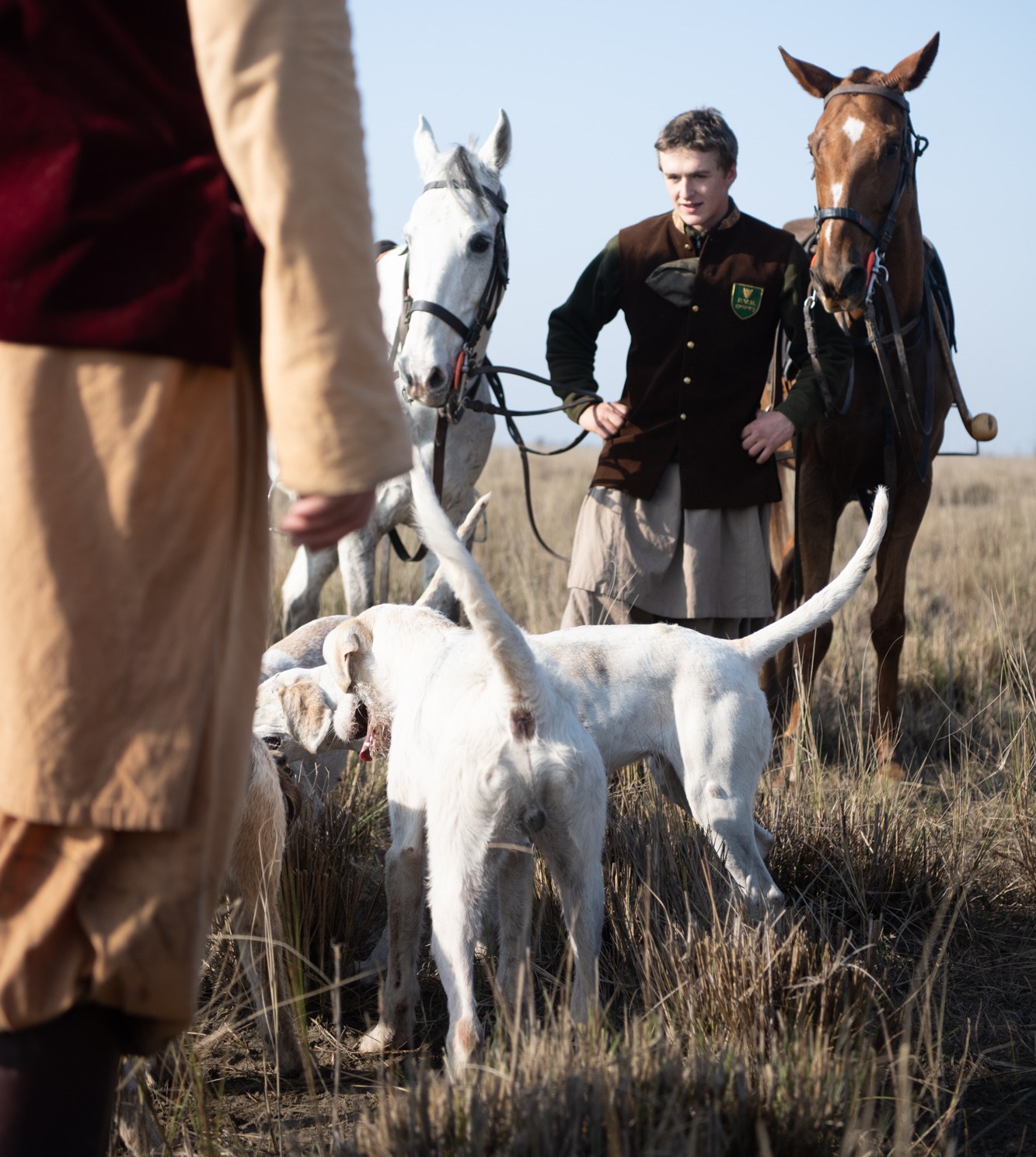
The following day, we edge closer to the Salt Range, where the terrain dramatically rises in layers reminiscent of Neapolitan ice cream. Our campsite, positioned at the foot of this incline, faces a chill that rustles through our tents like curious spirits. We enjoy breakfast of coffee, spiced omelette, and paratha while watching the salt trucks, laden with pink Himalayan salt en route to Karachi, rumble along the mountain road. These experiences are enriched by interactions with local goats, sheep, and lumbering tractors, all part of the region’s rural life as we make our way to a secluded waterfall cherished by Taimur’s family for refreshing swims. This segment of our journey brings us to a tranquil pool of crystal-clear water nestled among rocks. Each aspect of this expedition offers a unique atmosphere reflective of the diverse landscapes we traverse.
Horseback riding along this expansive route feels like a journey through ever-expanding horizons, seen through the eyes of our equine companions. The brilliance of Taimur and Bertie’s itinerary lies in its thoughtful incorporation of the vibrant traditions at the edge of Punjab. With our skillful horses, we follow the hounds at dawn, navigate dog carts, and even attempt to spear tent pegs while riding at a gallop (my spear misses its mark despite my horse’s steady pace).
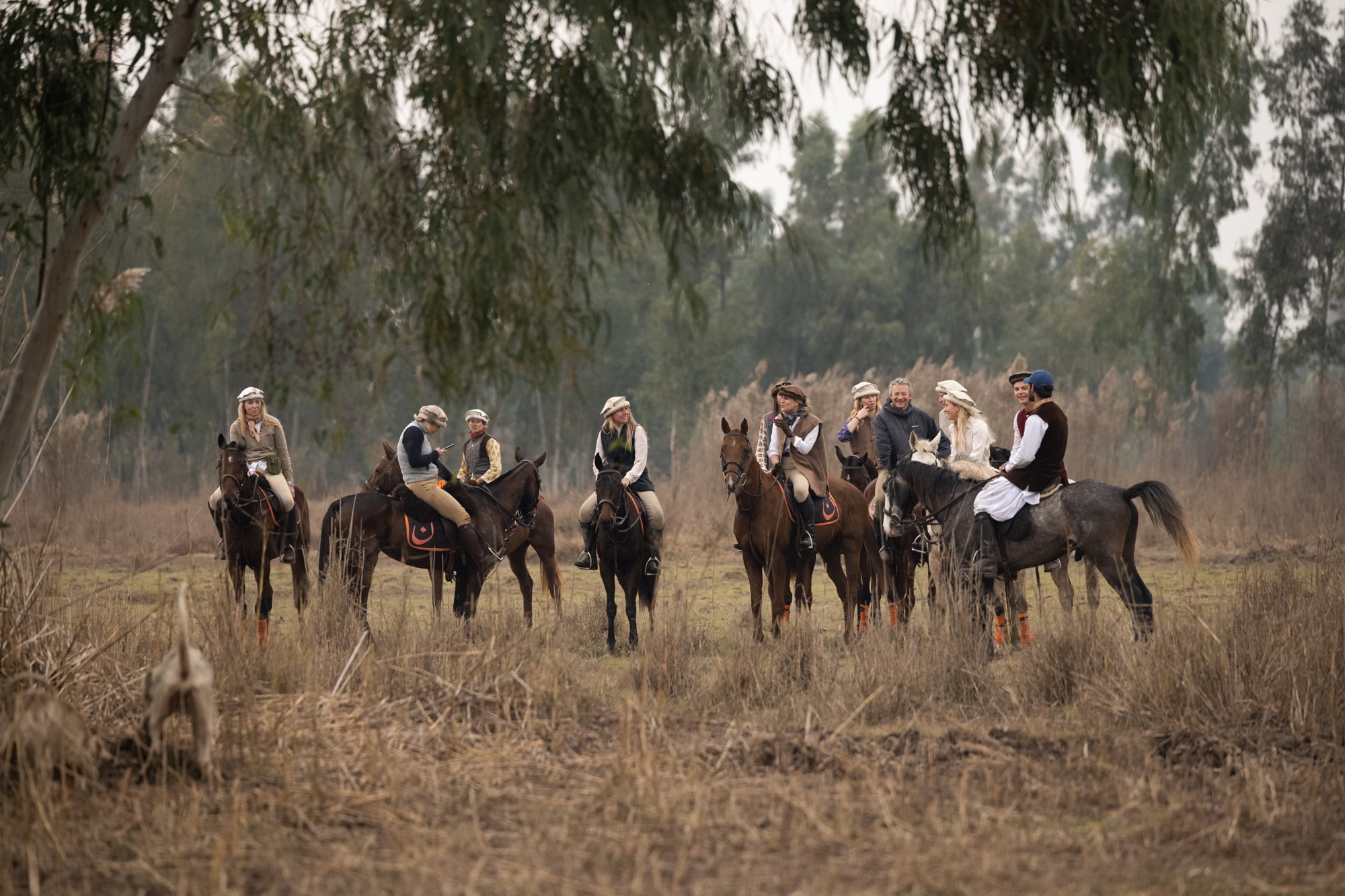
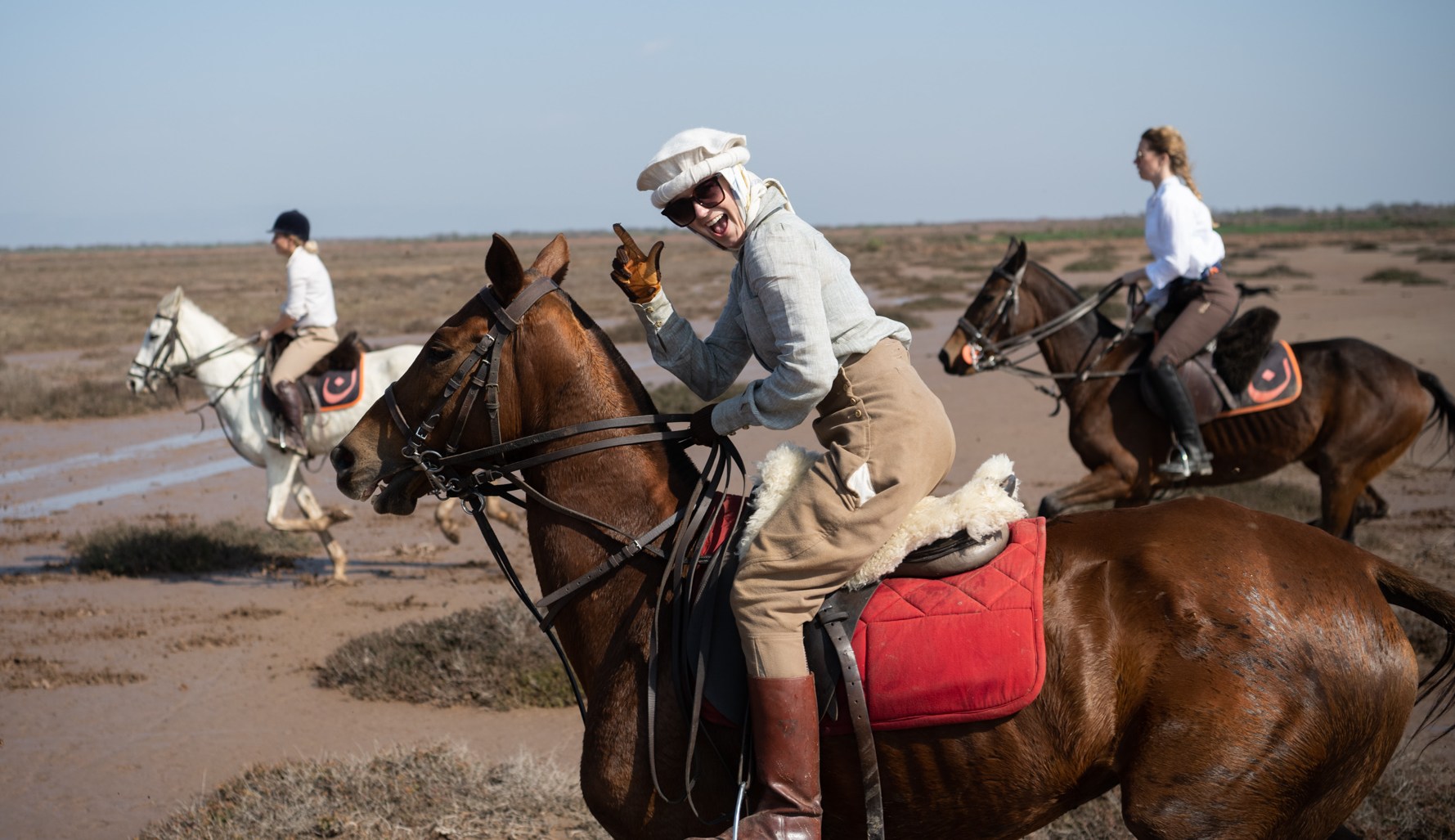
The tranquility of Nurpur Noon provides a compelling contrast to the intensity of Lahore, where we conclude our journey. As the oppressive smogs of early December clear, the city still maintains an ever-present haze that mutes its vibrant colors. We experience Lahore’s serene spots, including lunch at the polo club and dinner atop the historic Andaaz restaurant, which offers beautiful views of the Mughal Badshahi Mosque. Extending my stay by one day, I explore more of Lahore’s architectural treasures from the past four centuries, residing at the boutique hotel, The Fred. After the week’s hustle, Sunday morning brings a calmness as I visit the largely empty halls of the Lahore Museum, a colonial-era gem. Meanwhile, the courtyard of the Wazir Khan mosque buzzes with the cheerful atmosphere of wedding photography sessions.
The final stop on my last day is the Shalimar Gardens, which were commissioned in the 1640s by Shah Jahan, the same ruler behind the Taj Mahal. Once the pride of Lahore, this city was known for its grand gardens, featuring refreshing water courses that would enliven the atmosphere. The founder of the Mughal Empire, Babur, emphasized the significance of water in garden designs, with biographer Saleh Kamboh depicting Shalimar’s construction as a poetic endeavor with enchanting fountains harmonizing with the natural beauty around them.
Now managed by the Walled City of Lahore Authority, these lush gardens provide a peaceful retreat for city dwellers amidst noise and dust. Birds flock around the remaining irrigation pools, nurturing a serene environment among the immense plane trees. Initially designed as open-air palaces celebrating sensory experiences, these gardens have evolved into sanctuaries of wellness for the community, and they encapsulate the ideal conclusion to a journey defined by rich ecological discoveries.
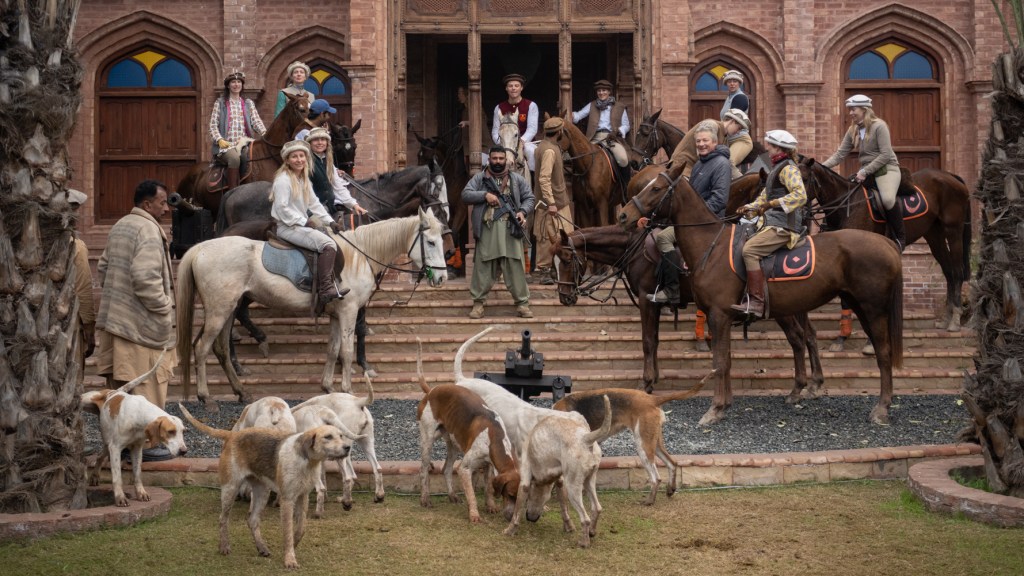


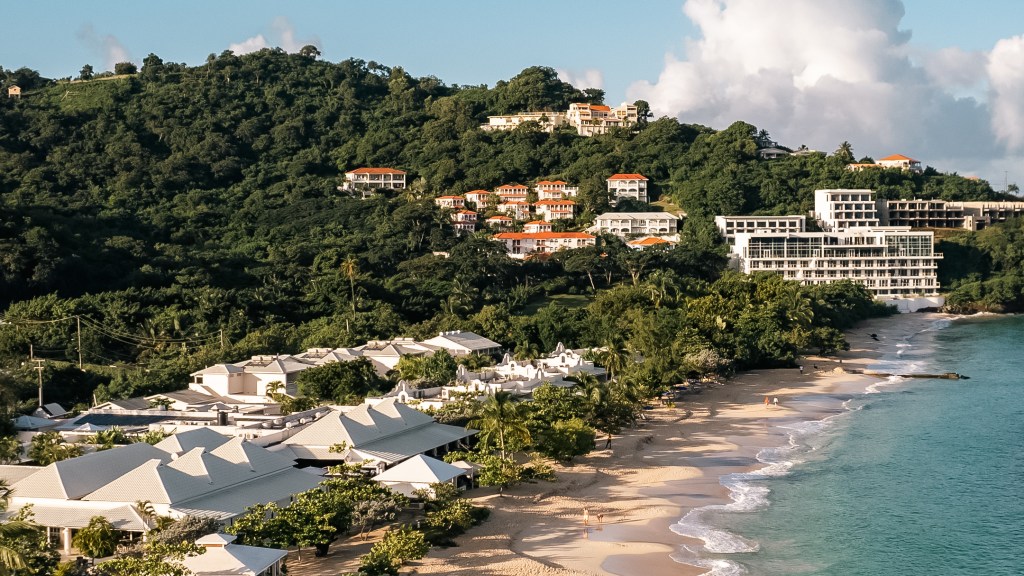
Post Comment